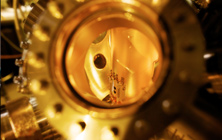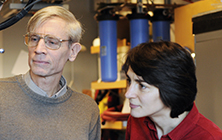

Research
Employment With SBQMI
SBQMI is devoted to offering opportunities at different stages of the scientific career. Conducting research in a collaborative project of our international setting profits from significant synergies which arise from sharing ideas and expertise as well as access to materials and experimental facilities between the partner institutions.
Areas of Research

Materials
A cornerstone of work in quantum materials is the fabrication of the materials themselves, and this occurs in UBC’s SBQMI with very close coupling to both experiment and theory. The range of materials is diverse, including transition metal oxides, pnictides, semiconductors, graphene and organics. The techniques used run the gamut from bulk single crystal growth, through thin films and heterostructures, all the way down to nanofabrication of device structures.

Experiment
At UBC’s SBQMI, the physical properties of quantum materials as well as quantum devices and nanostructures are studied with a suite of transport, thermodynamic, structural, and spectroscopic probes. Advanced methods with a varying degree of bulk/surface/interface sensitivity are available to the SBQMI researchers, ranging from the world of nanoelectronics to synchrotron-based spectroscopies at the Canadian Light Source, and mu-SR and betha-NMR at TRIUMF.

Theory
The theoretical and computational understanding of quantum materials and phenomena is a critical component of UBC’s SBQMI. This effort ranges from formal many-body theory to computational material science, with expertise in a wide variety of topics, such as strongly correlated and low-dimensional systems, topological insulators, diluted magnetic semiconductors, decoherence, and computational approaches for modeling materials on different length scales and in strong support of experimental studies.